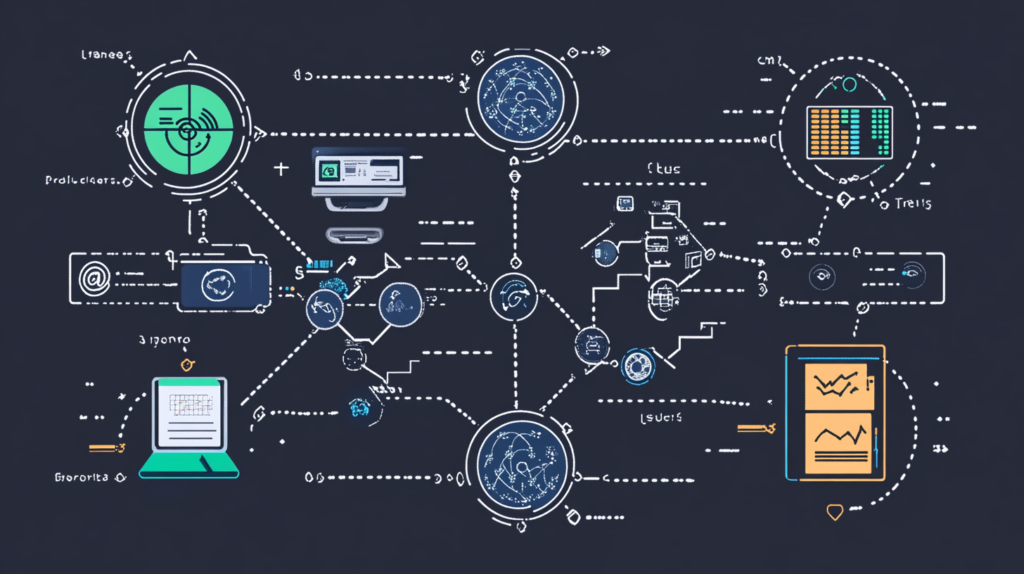Ace AI Interviews: Most Asked Artificial Intelligence Questions

Preparing for an AI interview can be challenging, especially given the wide range of topics that interviewers might cover. Whether you’re a beginner or an experienced professional, it’s crucial to be ready with comprehensive knowledge of AI concepts. This guide will help you navigate through the most common and important AI interview questions, covering everything from AI fundamentals to advanced topics like deep learning and AI deployment strategies. With these insights, you’ll be ready to impress your interviewers and land your desired role in the AI field.
Table of Contents
- Understanding AI Fundamentals
- Key Machine Learning Concepts
- Deep Learning Questions
- Natural Language Processing (NLP) Questions
- Supervised vs. Unsupervised Learning
- Evaluating AI Models
- AI Ethics and Bias Considerations
- AI Deployment Strategies
- FAQ
Understanding AI Fundamentals
AI fundamentals lay the foundation for all advanced concepts in artificial intelligence. A strong understanding of these basics is often the first step in any AI interview. Here, we focus on essential questions that will help you demonstrate your grasp of AI principles.
What is Artificial Intelligence?
Artificial Intelligence (AI) refers to the simulation of human intelligence in machines that are programmed to think and learn like humans. AI systems can perform tasks that typically require human intelligence, such as visual perception, speech recognition, and decision-making. Understanding this definition is crucial, as many interviewers will begin by assessing your comprehension of AI’s core concept.
What are the types of AI?
AI is generally classified into three types: Narrow AI, General AI, and Superintelligent AI. Narrow AI, also known as weak AI, is designed to perform a specific task like facial recognition. General AI aims to replicate human cognitive abilities, while Superintelligent AI surpasses human intelligence in all areas. Being able to differentiate these types shows a deep understanding of the AI landscape.
Key Machine Learning Concepts
Machine learning is at the heart of most AI applications. Understanding different machine learning concepts is vital for acing AI interviews. Here, we explore some common questions related to machine learning that candidates should prepare for.
What is the difference between supervised and unsupervised learning?
Supervised learning involves training a model on labeled data, meaning the algorithm learns from input-output pairs. In contrast, unsupervised learning deals with unlabeled data and is used to find hidden patterns or intrinsic structures in the input data. This distinction is fundamental, as many AI interview questions focus on explaining when to use each method.
Explain overfitting and underfitting.
Overfitting occurs when a model learns the training data too well, including noise and outliers, making it less effective on new data. Underfitting happens when a model is too simple to capture the underlying trends in the data. Understanding these concepts is essential for building robust machine learning models and is frequently discussed during interviews.
Deep Learning Questions
Deep learning is a subset of machine learning that deals with neural networks and large datasets. Many AI interview questions delve into deep learning concepts, making it important for candidates to prepare thoroughly in this area.
What is a neural network?
A neural network is a series of algorithms that attempt to recognize patterns in data. It is designed to work similarly to the human brain, with interconnected neurons that process input data. Neural networks are fundamental to deep learning, making this a common topic in interviews.
What are convolutional neural networks (CNNs) and recurrent neural networks (RNNs)?
CNNs are designed for image recognition tasks, using convolutional layers to extract features from images. RNNs, on the other hand, are used for sequential data like time series or natural language processing, as they have memory cells to retain information from previous inputs. Understanding these neural network types can help you tackle questions on AI use cases like computer vision and NLP.
Natural Language Processing (NLP) Questions
NLP is a crucial component of many AI applications, especially in chatbots and virtual assistants. Here, we explore questions that dive into natural language processing concepts and challenges.
What is tokenization in NLP?
Tokenization is the process of breaking down text into smaller units called tokens, which could be words, phrases, or sentences. It is a fundamental step in NLP pipelines, making it easier for models to analyze text. Being able to explain this process clearly can demonstrate your understanding of NLP workflows.
Explain the concept of word embeddings.
Word embeddings are a way to represent words in vector space, capturing the semantic meaning of words. Popular techniques like Word2Vec and GloVe are used to transform text into numerical data that can be processed by machine learning algorithms. This question tests your knowledge of key NLP methods and their role in AI.
Supervised vs. Unsupervised Learning
Understanding when to use different learning approaches is crucial for building effective AI models. Here, we address questions that help differentiate between supervised and unsupervised learning.
When should you use supervised learning?
Supervised learning is ideal when you have labeled data and want to predict outcomes or classify data into predefined categories. It is often used in applications like spam detection, sentiment analysis, and image classification. Being able to discuss specific use cases shows a practical understanding of AI.
What are some use cases for unsupervised learning?
Unsupervised learning is best for tasks where you need to find hidden patterns or group data without labeled outputs. Common examples include customer segmentation, anomaly detection, and clustering. This question often comes up in interviews to assess your ability to apply unsupervised learning effectively.
Evaluating AI Models
Model evaluation is crucial for determining the performance and accuracy of AI models. Interviewers often ask about different metrics and strategies used in AI model evaluation.
What is precision and recall?
Precision measures the accuracy of positive predictions, while recall measures the ability to identify all positive instances. Both metrics are critical for evaluating models in scenarios like medical diagnosis, where false negatives can have serious implications. Understanding these metrics helps demonstrate your ability to assess model performance.
How do you handle imbalanced datasets?
Imbalanced datasets occur when one class significantly outnumbers the others. Techniques like resampling, using appropriate metrics like F1-score, or applying synthetic data generation methods like SMOTE can help address this issue. This is a common challenge in AI implementation, and being able to provide practical solutions is essential.
AI Ethics and Bias Considerations
The ethical implications of AI and bias in algorithms are becoming increasingly important. Understanding these issues is key to responsible AI development.
What is bias in AI, and how can it be mitigated?
Bias in AI occurs when a model produces unfair or prejudiced results due to biased training data. Techniques like balanced data collection, fairness constraints, and transparency in algorithms can help reduce bias. This topic is critical as it aligns with current trends in responsible AI.
Why is AI transparency important?
AI transparency allows users to understand how an AI system makes decisions, which is crucial for trust and accountability. It is especially important in industries like healthcare and finance, where decisions can have significant consequences. Being able to discuss transparency shows your awareness of the broader impact of AI.
AI Deployment Strategies
Deploying AI models is a crucial step in bringing AI solutions to production. This section covers questions related to AI deployment strategies and best practices.
What are common challenges in deploying AI models?
Some common challenges include scaling the model to handle large data volumes, ensuring data privacy, and maintaining model accuracy in production. Addressing these challenges effectively requires a solid understanding of both AI development and operational aspects.
How do you monitor AI models in production?
Monitoring AI models involves tracking their performance over time to ensure they continue to produce accurate results. Techniques include setting up feedback loops, retraining models with new data, and using performance metrics. Discussing this topic shows your readiness to work on AI projects beyond just development.
FAQ
- What should I focus on for AI interviews? Focus on key areas like machine learning, deep learning, NLP, and AI deployment strategies. Understanding practical applications is also crucial.
- How can I prepare for an AI coding interview? Practice coding problems related to data structures, algorithms, and common AI libraries like TensorFlow and PyTorch.
- What programming languages are best for AI? Python is the most popular due to its extensive libraries. Other languages like R, Julia, and Java can also be useful depending on the application.
Deskcove offers comprehensive AI tools that can assist in developing, deploying, and monitoring AI models. With features tailored for automation and data analysis, Deskcove is a valuable partner for organizations looking to leverage AI in their operations.


